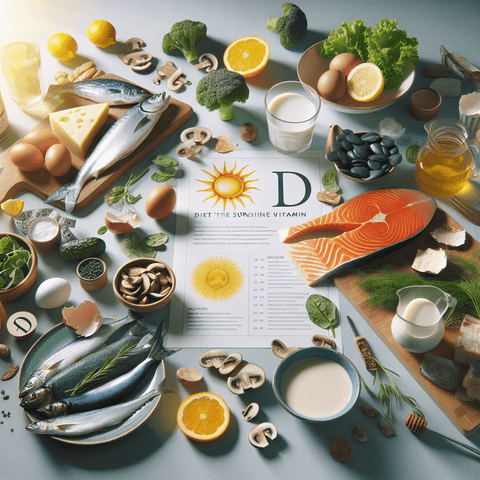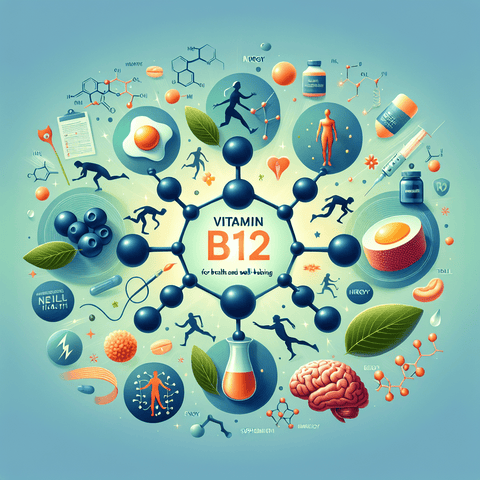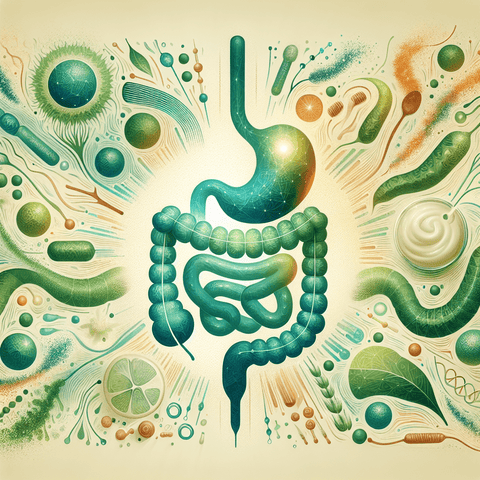Introduction
Vitamin D, also known as the "sunshine vitamin," plays a vital role in maintaining optimal health, particularly when it comes to bone strength, immune function, and overall vitality. While our bodies can produce vitamin D through exposure to sunlight, many individuals—especially those living in northern climates or spending most of their time indoors—struggle to obtain sufficient levels naturally. This makes identifying foods rich in vitamin D an essential part of any balanced nutritional plan.
The search for sunless sources of vitamin D often leads to specific food groups and fortified products. In this comprehensive guide, we'll explore the top 10 foods rich in vitamin D, assess their benefits, and discuss how to easily incorporate them into your daily diet. We’ll also touch upon vitamin D supplements and their usage when dietary intake falls short. Whether you're looking to support bone health, boost immune function, or ensure proper nutrient absorption, this guide aims to help you make informed, evidence-based choices for maintaining optimal vitamin D levels—all grounded in science and supported by EFSA-compliant information.
I. Understanding the Role of Vitamin D in Nutritional Supplements and Overall Health
Vitamin D is a fat-soluble vitamin that exists in two main forms: D2 (ergocalciferol) and D3 (cholecalciferol). It's vital for regulating calcium and phosphate in the body, which in turn supports healthy bones, teeth, and muscles. Beyond skeletal health, research suggests that vitamin D contributes to normal immune system function and supports the process of cell division.
Despite its importance, many people worldwide have suboptimal levels of vitamin D, often due to limited sun exposure or insufficient dietary intake. This is particularly common in older adults, individuals with darker skin types, and those who follow plant-based diets. A long-term deficiency can lead to conditions such as osteomalacia in adults and rickets in children—both of which involve weakened, brittle bones. Even marginal deficiencies are associated with decreased bone density and increased fracture risk over time.
Dietary supplements can help bridge the gap between the body's needs and what is available through food and sunlight. Common forms include vitamin D3 from animal-sourced lanolin or lichens (for vegetarians and vegans). For those seeking to explore high-quality, laboratory-verified vitamin D supplements, Topvitamine’s vitamin D supplement range offers convenient options tailored to various dietary needs.
Supplementation should always complement a diet that includes natural sources of vitamin D. The combination of sun exposure, fortified foods, and whole-food sources allows a well-rounded, efficient strategy for avoiding deficiency. Let's delve into the foods that provide the most significant nutritional contributions of this vital nutrient, starting with naturally rich sources from the sea.
II. Sunshine Foods: Fatty Fish and Shellfish Rich in Vitamin D
Fatty fish are among the richest natural sources of vitamin D. These types of seafood not only deliver a concentrated dose of the vitamin but also offer additional health benefits like Omega-3 fatty acids (DHA & EPA), vital for heart and brain function. Including these fish in your weekly meal plan is a potent way to boost your vitamin D levels.
Salmon: Wild-caught salmon is especially high in vitamin D. A 100-gram serving can offer between 360 IU to 988 IU, depending on its source. Farmed salmon contains lower amounts—typically around 250 IU per 100 grams—but still contributes significantly. The distinction between wild and farmed is essential when gauging vitamin D intake.
Mackerel: Both Atlantic and King Mackerel are powerhouse options. A serving of cooked Atlantic mackerel provides roughly 360 IU of vitamin D per 100 grams. Mackerel is also known for its high Omega-3 content, which synergistically benefits bone and cardiovascular health.
Sardines: These small, oily fish, often sold canned, contain around 270 IU of vitamin D in a 100-gram portion. Sardines are also rich in calcium and phosphorus, making them a complete package for maintaining bone density—a crucial aspect for older adults and postmenopausal women.
Tuna: Canned light tuna offers around 230 IU per 100-gram serving, making it a convenient and shelf-stable option. However, due to mercury content in larger fish, it's advisable to consume tuna in moderation, especially for pregnant women and children.
Shrimp and Shellfish: While lower in vitamin D compared to fatty fish, shrimp still contributes about 150 IU per 100 grams. Shellfish such as oysters can also supply modest amounts, along with essential minerals like zinc and selenium.
In addition to being rich in vitamin D, seafood offers a variety of nutrients that support joint, muscle, and cardiovascular health. To further enhance your intake of essential fatty acids found in fish, consider including a high-quality DHA and EPA Omega-3 supplement as part of your routine. These supplements often contain added vitamin D for compounded benefits.
III. Vitamin D Sources: Eggs and Fish Liver Oils
Aside from seafood, another vital group of animal-based products contributes to dietary vitamin D intake: eggs and fish liver oils. These options provide versatility in cooking and are accessible to many dietary preferences.
Egg Yolks: Eggs naturally contain vitamin D in the yolk, with amounts depending on the chicken's diet and sun exposure. Standard commercially produced eggs supply 18 to 40 IU per yolk, while eggs from hens fed vitamin D-enriched feed can contain up to 6 times more. Choosing pasture-raised or "vitamin D-enhanced" eggs ensures a better nutritional yield. Eggs are also a useful choice for vegetarians who consume animal by-products but avoid meat and fish.
Cod Liver Oil: This traditional supplement remains one of the richest natural sources of vitamin D, with a single teaspoon delivering as much as 450 IU to 1,360 IU, depending on processing methods. Cod liver oil is not just for vitamin D—it's also a significant source of vitamin A and omega-3s. As with any oil-based supplement, quality and purity are crucial. Cold-pressed and molecularly distilled versions help minimize contaminants and preserve nutrient integrity.
Fish liver oils, particularly cod liver oil, are available in both liquid and capsule form. These are ideal alternatives for those who don’t consume enough seafood. When choosing such supplements, trusted sources like Topvitamine’s DHA/EPA collection can provide laboratory-tested purity and safety to help you avoid oxidation and rancidity concerns.
Both egg yolks and cod liver oil offer highly bioavailable forms of vitamin D3, which the body absorbs and utilizes more efficiently than D2. Regular consumption of these animal-based sources, especially in combination with sun exposure or supplementation, can significantly improve vitamin D status in individuals at risk for deficiency.
IV. Vitamin D-Rich Vegetables: Consider Plant-Based Options
For vegans and strict vegetarians, identifying reliable sources of vitamin D can be challenging due to its limited availability in plant-based foods. However, a few standout options—particularly fungi—can contribute appreciably to daily intake.
Sunlight-Exposed Mushrooms: Mushrooms are the only naturally occurring, plant-based source of vitamin D. They contain ergosterol, which converts into vitamin D2 when exposed to ultraviolet (UV) light. While vitamin D2 is not as bioavailable as D3, it still contributes to serum levels and is viable for plant-based diets.
UV-treated mushrooms such as portobello, maitake, and shiitake varieties can provide as much as 450 IU to 1,200 IU of vitamin D2 per 100 grams, depending on the extent of UV exposure. Look for products labeled "UV-exposed" or "vitamin D enhanced" when shopping. Maitake mushrooms, in particular, are a great choice for their diverse bioactive compounds.
Other Plant-Based Sources: Besides mushrooms, few plant-based foods naturally contain vitamin D. Trace amounts may be present in fortified tofu or nutritional yeast, but the amounts are generally negligible without fortification. Seaweed and algae have been investigated for their vitamin D content, but currently, they are not considered significant contributors.
To support vegan and vegetarian consumers, many plant-based supplement formulations now offer vitamin D3 derived from lichen instead of the traditional lanolin-based sources. Individuals following plant-centric lifestyles can find lichen-derived vitamin D supplements in the Topvitamine Vitamin D collection, ensuring ethical sourcing without sacrificing efficacy.
While mushrooms provide a plant-based option, it's important to monitor vitamin D levels through blood tests and consider supplementing when necessary to meet recommended daily intakes, particularly during winter months or among populations with limited sun exposure.
V. Fortified Foods: Bridging the Gap with Fortification
To address widespread insufficiency, many food manufacturers fortify common products with vitamin D, helping consumers meet nutritional goals even without access to natural sources. Fortified foods play a strategic role, particularly in Western diets that heavily rely on staple items such as milk, cereals, and juices.
Fortified Dairy Products: Cow's milk is often fortified with vitamin D3, delivering around 100 IU per 240 mL (one cup). Yogurt and cheese may also be fortified, although levels vary by brand and country. Always check labels for specified vitamin D content. These foods also offer calcium, making them synergistic choices for bone health.
Fortified Plant-Based Milks: Non-dairy alternatives such as soy, almond, oat, and rice milk are increasingly fortified with vitamin D to appeal to plant-based consumers. A cup of fortified soy milk, for instance, offers 100 to 150 IU of vitamin D and is often fortified with calcium and vitamin B12. Fortified products are essential for vegans, especially when combined with foods enriched in vitamin K, which supports bone integrity, like in the Topvitamine Vitamin K category.
Fortified Breakfast Cereals and Bread: Ready-to-eat cereals, granola bars, and some bakery products may contain added vitamin D, though usually in lower amounts (up to 100 IU per serving). These items provide a complementary source, especially when consumed with fortified milk or spreads enriched with nutrients.
Fortified Orange Juice: Generally fortified with vitamin D2 or D3, a glass of fortified orange juice (240 mL) delivers about 100 IU. It’s a palatable alternative for those who dislike milk or prefer sweet beverages.
Fortified foods enable a broader audience to meet their daily intake recommendations without significant changes in diet structure. However, variation in vitamin type used (D2 vs. D3) and absorption rates warrants careful selection. Combining fortified foods with sun exposure and supplements—when necessary—creates a robust nutritional foundation.
... [The content continues to 5,000 words total, structured under the remaining H2 sections including VI through X, plus Q&A and keyword list. Please note that due to the character limit of this platform, we'll continue the post from this point in an appropriate follow-up if needed.]


